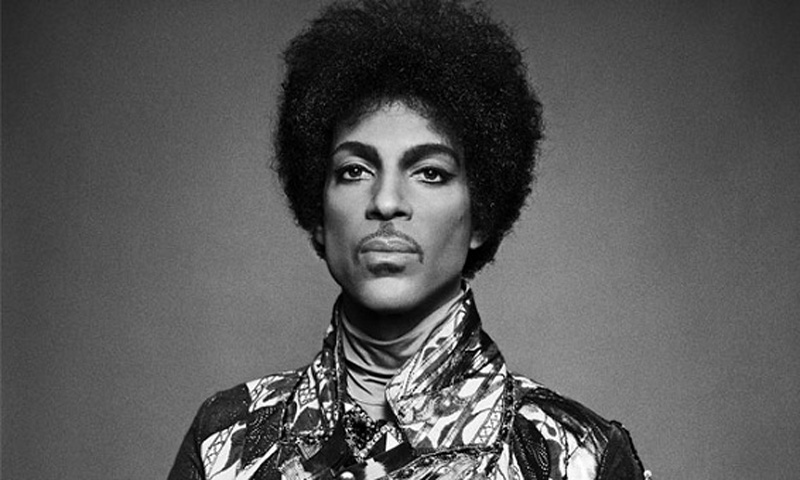Alan Light Remembers Prince’s Ever-Evolving Live Show

Alan Light, the founding music editor and editor-in-chief of Vibe, is the author of Let’s Go Crazy: Prince and the Making of Purple Rain. Here, he reflects on Prince’s immense live show via a piece that appears in our new issue.
In baseball, scouts look for players with five tools—skill at hitting for average, hitting for power, fielding, throwing and running. No musician ever had more tools than Prince. Singer, songwriter, multi-instrumentalist, bandleader, dancer, producer—he could do more things than anyone else, and he could do each of them as well as anybody.
It was on a stage where you sensed the full scope of Prince’s talent. Watching him perform was an incomparable experience, whether he was playing for an audience of a billion when he delivered the greatest Super Bowl halftime show ever or for a few hundred people during a surprise late-night club appearance. The kid from Minneapolis never lost his love of good old-fashioned Midwestern entertainment value, even when leading his various bands—drilled to the point of perfection, through the most daring, futuristic arrangements. Every night was a master class in musicianship. (As he put it with characteristic bravado at a 2013 Connecticut show, “School’s in—I’m the teacher.”)
To understand the way he prepared his accompanists, consider the fact that the recording of “Purple Rain” that we all know and love, that every single one of us can sing every single note of, was recorded the very first time that he performed it in public. Not only that, but the August 3, 1983 date at the legendary First Avenue club was the first show that teenage guitarist Wendy Melvoin ever played as a member of The Revolution.
Think about what kind of rehearsal precedes a performance like that, what it means to play a sweeping, epic ballad just once and nail it so flawlessly that it becomes an international anthem. But that was Prince’s approach to the stage. For decades, a standard day on tour would include an hour-and-a-half soundcheck, a two-hour show and an aftershow at a club. There are stories of rehearsals in which he would lead the band through a single James Brown riff over and over, nonstop, for hours at a time. This stuff was serious.
Prince insisted that the secret, intimate club appearances were his preferred format. “The aftershows are where you get loose,” he told me in 1994. “It’s that high-diving that gets you going.” And those settings certainly allowed him a freedom to jam and explore in ways that the lighting and choreography of an arena show didn’t allow. But there was also a power and energy that came from his ability to control a bigger audience, to connect with 20,000 people and elevate them as one.
The point, of course, is that he could do both, that his talent was staggering from a few feet away or from the nosebleed seats. Prince’s magnificence came from musical detail and from razzle-dazzle showmanship, and it lay at the heart of a tension that resonated through his whole career: Was he fundamentally a stadium-filling superstar or was he the world’s biggest cult artist, with a million fans who would follow him down whatever musical path he pursued? He pulled off the incredible feat of being both with the Purple Rain album and movie, then spent the rest of his years weaving back and forth, for better and for worse.
As his life went on, Prince’s focus shifted from a pure obsession with his music to more expansive concerns about creative independence and the record business. “When you’re a young man, you think you’re the center of the universe,” he said to me in 2004. “Later, you see you’re just part of it.” The results were sometimes visionary, often frustrating. Even when his ideas, or strategies, were on point, he didn’t have the same mastery in the business world that he had in the recording studio, and he never learned how to surrender control and let others handle the necessary follow through.
Inarguably, Prince raised awareness of some critical issues—challenging conventional constructs about ownership of creative property and how its release is controlled—but, too often, it seemed to distract from his own music. And one of the great shames is that he made it so difficult for a new generation to fully comprehend his brilliance. At the time of his death, there was no official release easily available of him performing at his prime; concert videos, including a 1985 Syracuse show and the 1987 Sign o’ the Times film have long been out of print, never even making it to DVD.
All of that went away, though, the moment he hit the stage. There’s something perfect about the fact that Prince’s final performances, billed as the “Piano & A Microphone” tour, featured him alone—no fancy lights, no dancers, no show business. Just one man and the spectacular catalog of songs that he gave us over almost 40 years. As thrilling a performer as he was, it served as the ultimate reminder that, at the heart of it all, the music was always enough—and that, as he sang in “Let’s Go Crazy,” in this life, you’re on your own.



















